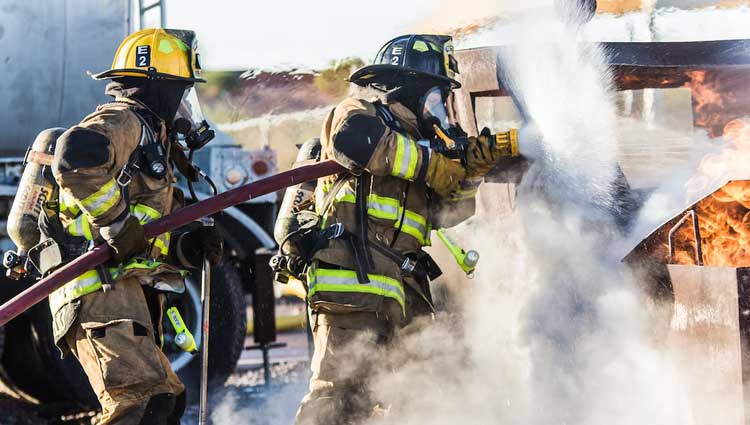Today, remote work and cushy office environments have become the norm for many people. It’s easy to get used to the comforts of our daily routines and forget the challenging lives that others lead. In fact, our everyday lives are often enriched by the dedication of people in demanding occupations.
When we mean demanding, we aren’t talking about a ‘long meeting’ every other day. There are so many occupations where life and limbs are at risk. Yet, these are jobs that need to be done every day.
4 Toughest and Dangerous Job
Today, we look at four such careers and the challenges that the hard workers in them face on our behalf.
1. Firefighters
Firefighting is undeniably one of the riskiest occupations out there. Every time a building on fire needs to be put out, firefighters risk being injured by falling debris and blazing flames.
Structural collapses can occur without warning and pose a constant threat. The smoke and fumes can also be extremely toxic to be around. Even with considerable training, it is still physically and mentally taxing.
When they are not dealing with fire emergencies, firefighters still have to worry about their health. This is because a lot of the equipment they use is toxic.
The best example would be Aqueous Film Forming Foam (AFFF). While it is effective in fighting liquid fires, exposure to it is known to cause cancer. According to TorHoerman Law, countless firefighters have sought legal recourse for the health consequences they have suffered due to AFFF.
The latest AFFF lawsuit update showed that over 6,000 individual cases are being consolidated into multidistrict litigation. This is the harsh reality of firefighting. As if dealing with fire and collapsing buildings wasn’t enough, firefighters also risk cancer through the equipment they use.
2. Roofers
Roofing is another essential occupation that allows our homes to be protected from the elements. However, it can also be one of the riskiest, as roofers deal with a number of challenges.
It may not seem like a particularly dangerous line of work, but you would be surprised. It’s interesting how our bodies have the ability to sometimes survive violent explosions in war, but a simple fall can kill you. Falls are quite underestimated, considering close to 700,000 people die from it every year.
When you remember that roofers spend a considerable amount of time on high, elevated surfaces, you realize how risky the occupation is. Falls from roofs, ladders, and scaffolding can lead to severe injuries, and in many cases, death.
3. Logging Workers
Chopping down big trees is inherently a risky task, and logging workers face hazardous situations every day. They often work in remote and challenging environments and rely extensively on dangerous machinery. We are talking about chainsaws, feller bunchers, skidders, and log loaders.
Operating these tools is dangerous on its own, but even if you manage to use them safely, the forest itself poses risks. Tree falls are unpredictable and fast and kill countless loggers every year. Data shows that 59% of deaths in this field are caused by falling objects.
You can never really get used to your job site as well, because each assignment can differ drastically. Logging is an ‘all-weather’ profession, and work often occurs in rugged and uneven terrain where wildlife encounters are a problem. Snake bites and even bear attacks are dangers that logging workers have to deal with in the course of their work.
4. Offshore Oil Rig Workers
Offshore oil rig workers are a special breed of people. They spend extended periods away from their families and loved ones on isolated rigs in the middle of the ocean.
In addition to the isolation, offshore rig workers face some of the most hostile environmental conditions on earth. These rigs are exposed to extreme weather conditions, including the frigid cold, large waves, and violent storms at sea. In such conditions, everyday tasks can become arduous and draining.
The work schedule on an offshore rig is also relentless. Workers have to deal with long shifts. They are often on duty for 12 hours or more each day. Even weekends off are a luxury that is rarely granted.
With oil and gas being the focus, there is always the foreboding risk of fires and explosions. If the worst were to happen, helicopter evacuations during emergencies would also be a complex and difficult affair. If something goes wrong at night or in bad weather conditions, it can truly get nightmarish.
Despite these challenges, oil rig workers wake up every day, happy to do their part to keep society functioning.
Conclusion
It’s easy to take for granted the safety and comforts we enjoy. We often forget the dangers faced by people in some of the most hazardous but essential occupations out there.
We really need to recognize and appreciate the commitment and courage of those who choose these tough-to-walk paths. They keep our homes secure, our forests sustainable, our communities safe, and our lives convenient. That is truly worth some gratitude.

